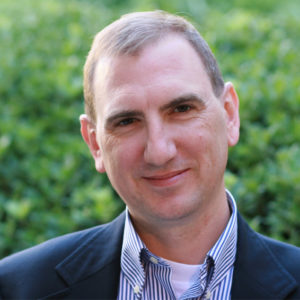On religious liberty: a surprisingly hopeful tale

On the surface, 2015 was a stormy year for religious liberty. The topic made news more regularly and controversially than at any time in recent memory. In hindsight, however, there were also quiet points of consensus that should be hailed — and not only in their own right but also for their promise in resolving conflicts where agreement has so far proven elusive. As Harvard Law School Dean Martha Minow explained years ago, “accommodation and negotiation can identify practical solutions where abstract principles sometimes cannot — and, in the meantime, build mutual trust.”
Sure, 2015 saw Indiana’s Religious Freedom Restoration Act fight, the Kim Davis saga in Kentucky, and even Donald Trump’s proposed religious test for immigration. But there were also occasions of unity that confirmed the abiding reality that religious liberty is a cherished part of our national identity that can typically be protected in a way that honors competing interests. These instances also revealed the under-reported fact that most religious liberty cases have nothing to do with sex or national security; they simply involve people of marginalized communities or beliefs trying to live and work in a pluralistic society while honoring their consciences.
The first encouraging notes came from the U.S. Supreme Court. With the exception of the 2014 Hobby Lobby ruling, the court has acted with virtual unanimity in every free-exercise dispute it has heard this millennium. In 2015 there was Holt vs. Hobbs and Equal Employment Opportunity Commission vs. Abercrombie & Fitch, which broadly protect religious exercise in prison and at work; Holt involved a Muslim inmate’s right to keep a beard, while Abercrombie concerned a Muslim teenager’s ability to wear a headscarf on the job. These cases are particularly heartening to minority faiths, which have historically relied on our nation’s founding promise of universal freedom no matter the chosen religion. In siding with the plaintiffs in Holt and Abercrombie, the court reaffirmed this distinctly American understanding.
More good news came from the military. Like many other minority faiths, the Sikh religion has maintained unshorn hair as a sacred practice for more than 500 years; Sikhs have died rather than cut their hair. For decades, however, the U.S. Army has prohibited its soldiers from wearing beards for religious reasons. This effectively precluded Sikh Americans, a deeply patriotic community, from serving their country. After a series of legal challenges and the urging of Congress, the Army finally relented in 2015, allowing a religious beard for an active-duty Sikh and all ROTC candidates. As the accommodated soldier rejoiced to the New York Times, “My two worlds have finally come together.”
Yet another bright spot was the recent launch of the “Know Your Neighbor” campaign at the White House. Led by a remarkable coalition of religious and public-interest groups — including Christians, Jews, Muslims and Sikhs, as well as the American Civil Liberties Union and Becket Fund for Religious Liberty — the project fosters understanding and respect among those of any or no religious faith. The effort holds special promise in harnessing the blessing of our unparalleled diversity in an era of mistrust and fear, particularly after the evil unleashed in San Bernardino and Paris and the resulting anti-Muslim backlash. In such difficult times, some might be tempted to forget that religious liberty is vital to authentic freedom and peace. Know Your Neighbor urges us to resist that fallacy.
Finally, even in the more publicized areas there were at least glimmers of hope. Leaders of both political parties roundly decried Drumpf’s proposed ban on Muslim immigrants; religious and gay-rights advocates in various states have continued to explore antidiscrimination measures that might address their respective concerns; and then there was Pope Francis’ acclaimed September U.S. visit, where he stressed religious liberty to diverse audiences at almost every stop — even meeting on the same day with President Obama and the Little Sisters of the Poor, who will face off in the Supreme Court this spring over the administration’s contraceptive rule for nonprofits. These efforts may not lead to easy solutions, but they show that dialogue can and should occur.
Religious liberty will no doubt continue to be the subject of challenges and controversies in 2016, and beyond. And many will be of the thornier kind. As we start the new year, however, it would serve us well to look beyond the turbulence and recall the enduring strength of the principle and the possibility of workable balances that respect the rights and interests of all.
This op-ed was published by the SF Chronicle on January 2, 2016.
